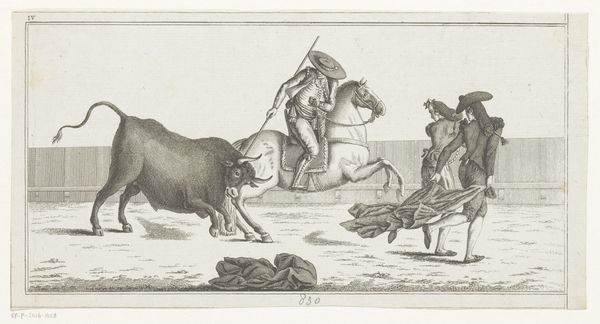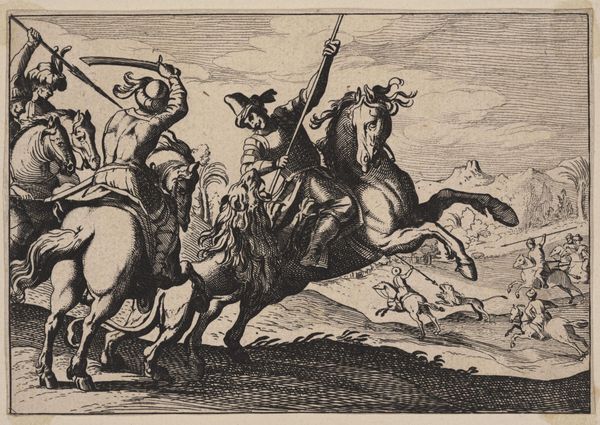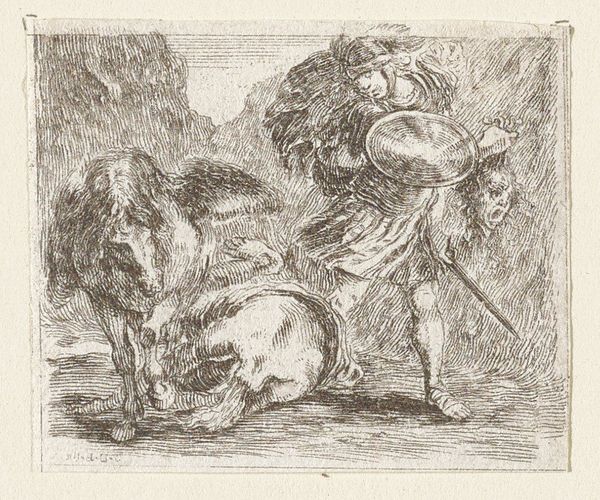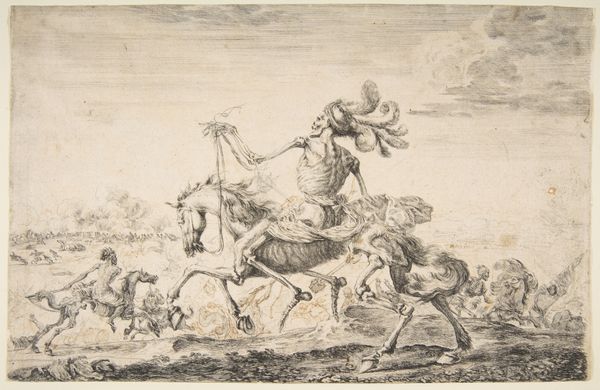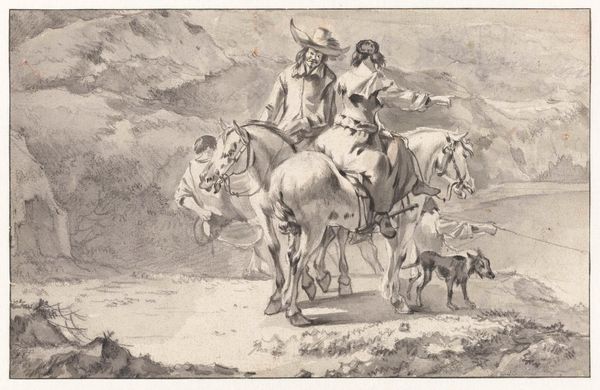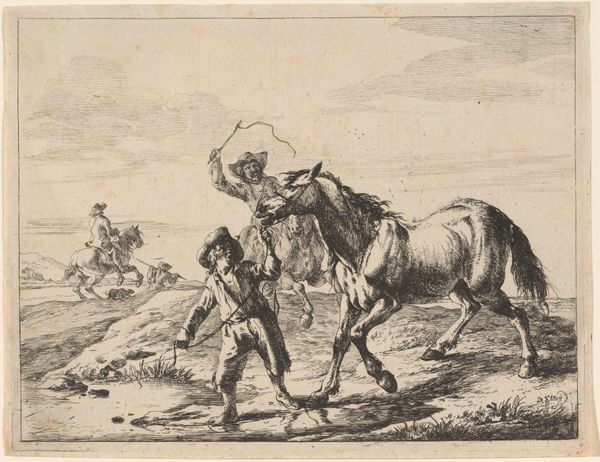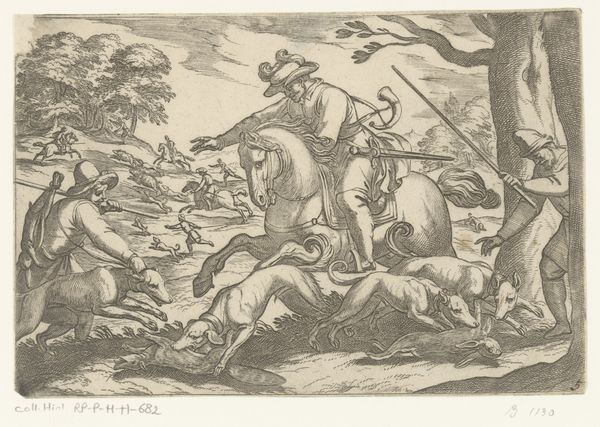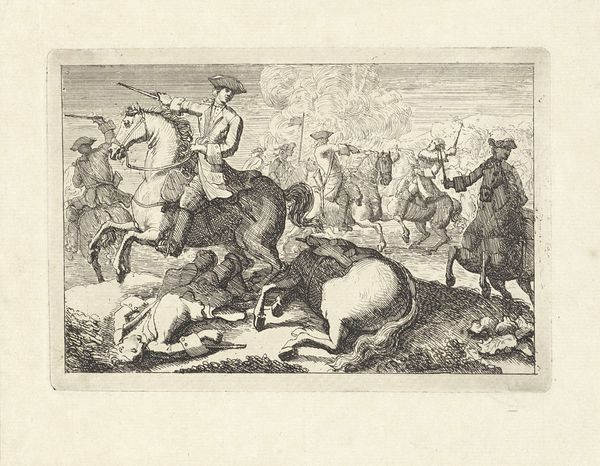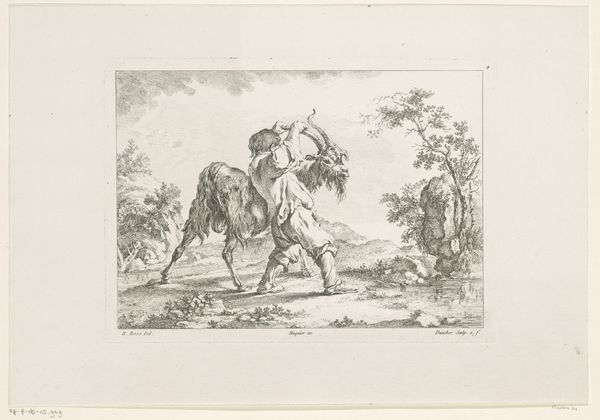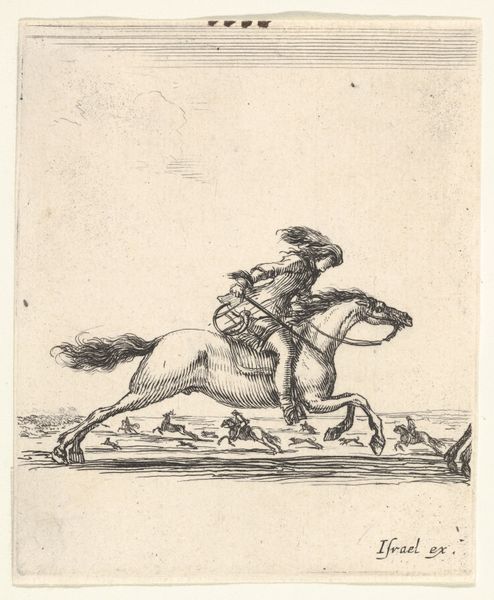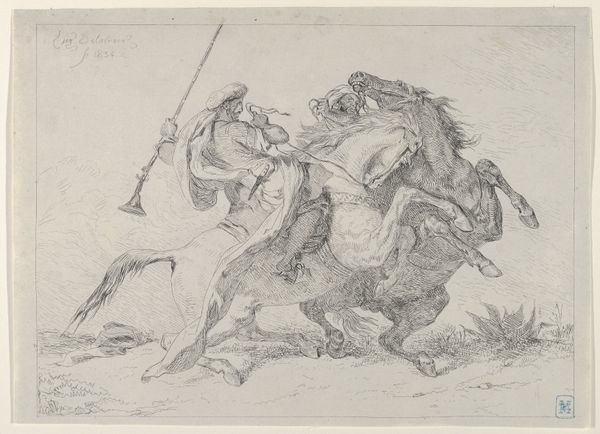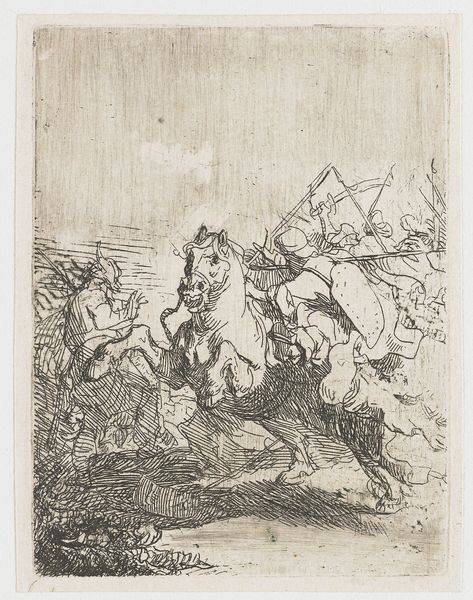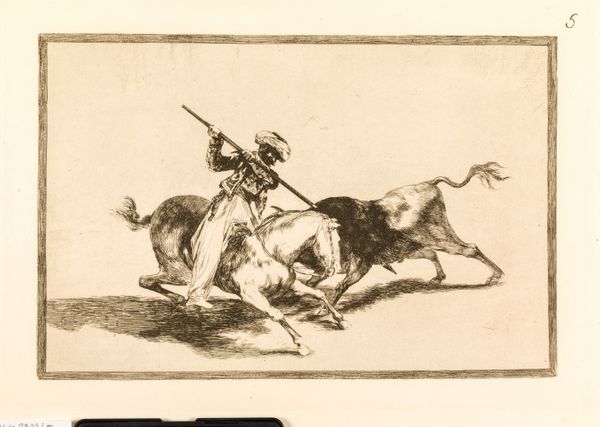
drawing, print, ink, engraving
#
drawing
#
baroque
# print
#
pen illustration
#
landscape
#
figuration
#
ink line art
#
ink
#
line
#
genre-painting
#
engraving
Dimensions: height 142 mm, width 187 mm
Copyright: Rijks Museum: Open Domain
Curator: Welcome. Before us is "Muilezeldrijver slaat een paard," created between 1657 and 1677 by Marcus de Bye and currently held in the Rijksmuseum collection. It's an engraving using ink, showcasing a detailed scene. What's your immediate reaction? Editor: Chaos, pure chaos! There’s a palpable sense of struggle and conflict. The composition seems unbalanced, with the driver lashing out amidst an already turbulent landscape. It evokes a feeling of unrest, and certainly cruelty. Curator: Indeed. De Bye masterfully uses line to convey motion and tension. Observe the frenetic energy in the horse’s rearing posture and the mule driver’s forceful gesture. Note how the linework creates tonal variations that model volume, creating form through contrast alone. Editor: But that violence isn't just formal; it's loaded with social commentary. A mule driver, presumably lower class, violently lashing out. Is this perhaps a depiction of the powerless taking their frustration out on the animals they control, symbolic of broader power dynamics? Does this reveal something about labor conditions? About class in 17th-century Netherlands? Curator: It is tempting to impose modern readings, however, consider the purely formal arrangement; the stark contrast between the light, agitated horse and the dark, prone mule creates an almost symmetrical visual echo that pulls the piece together formally. One could also discuss this engraving within the landscape tradition of the time. How does it both adhere to and break from established conventions? The rural context can offer interesting readings. Editor: Surely the genre-painting aspect is ripe for deeper investigation? These were scenes from everyday life, right? By depicting such a harsh scene, de Bye isn’t just showing us an event. It suggests something about the normalised state of labor and interactions during that era. It is interesting, also, that it focuses only on the working classes... what does the lack of representation of bourgeois or noble characters tell us? Curator: Regardless, the technical skill is undeniable, yes? The artist demonstrates exceptional control over the medium to create texture and depth with minimal shading. In considering its placement amongst Dutch baroque styles of line illustration, it stands apart for its emotional directness, if not crudity. Editor: I find it remarkable how a seemingly simple drawing can open up so many paths for interpretation, prompting critical discussions about power, society, and representation in art. It challenges us to delve deeper. Curator: Absolutely. It exemplifies how considering technique as a set of intentional choices gives new context to historical narratives.
Comments
No comments
Be the first to comment and join the conversation on the ultimate creative platform.
